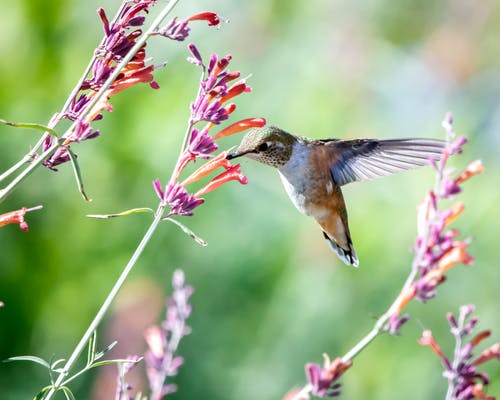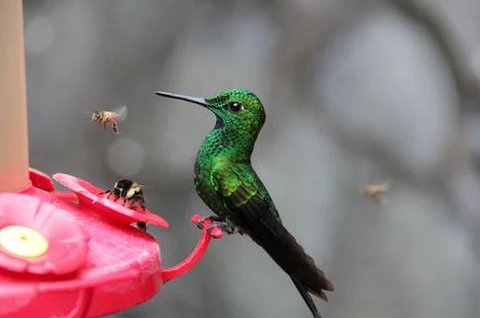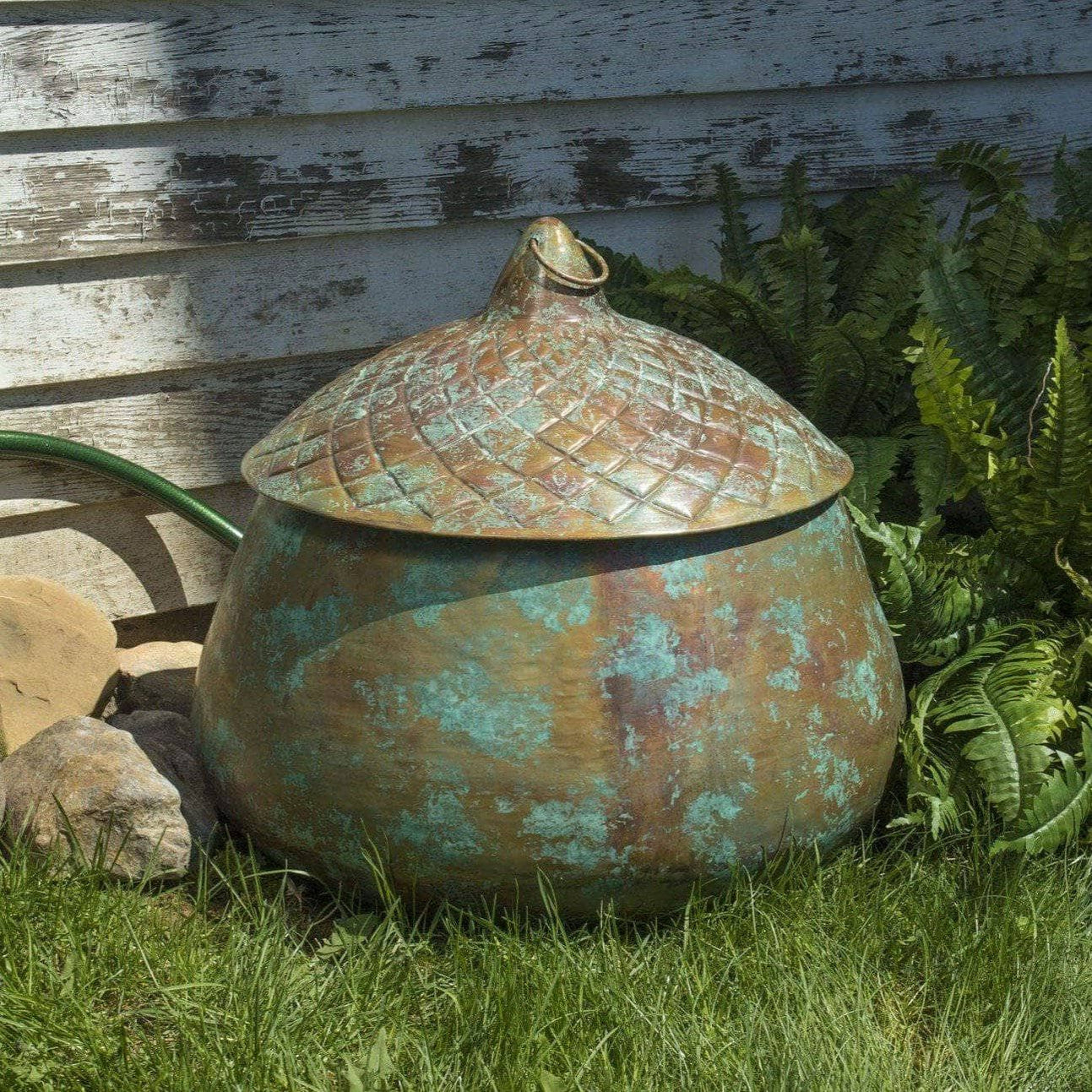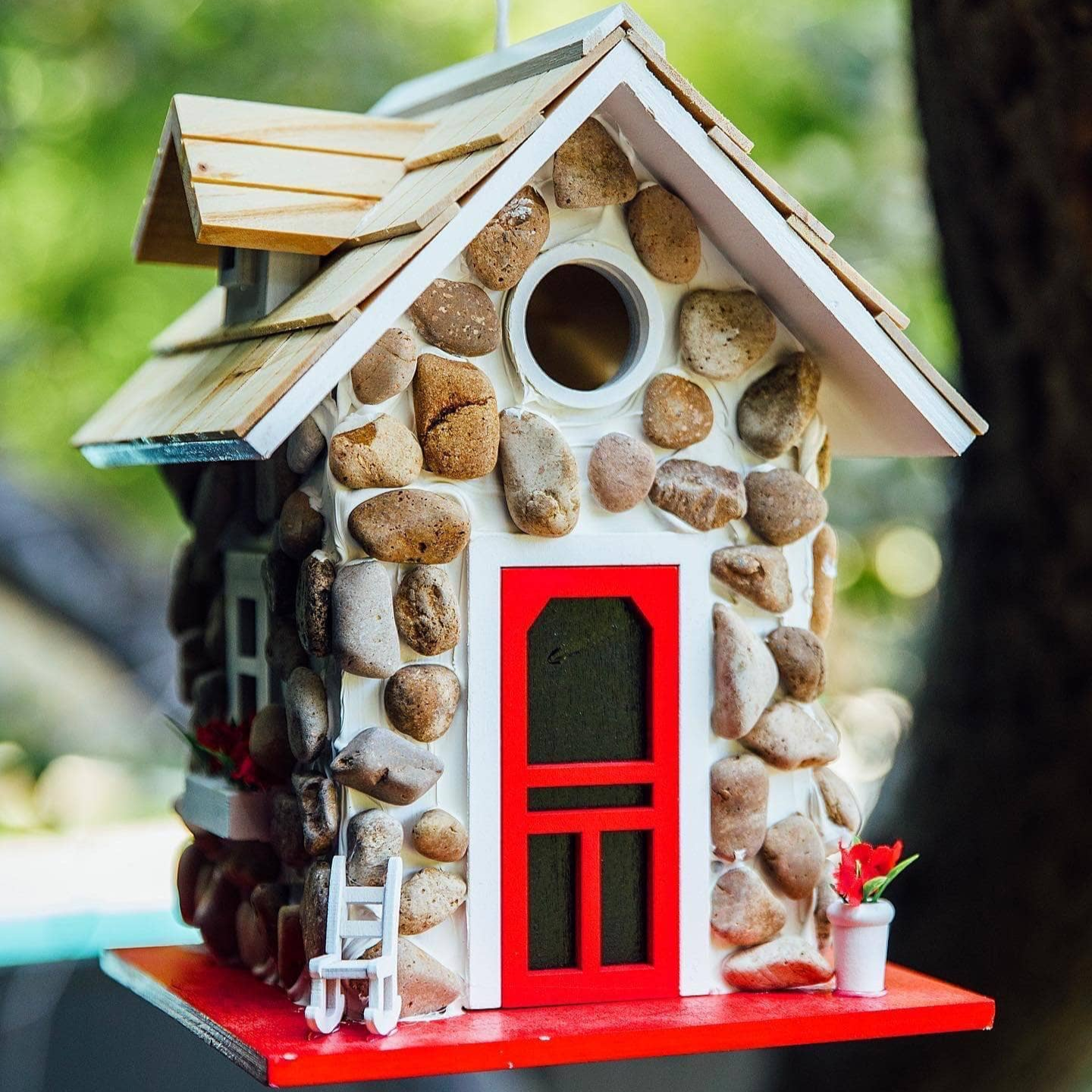
Hummingbird Garden Plans: 10 Ways to Attract Hummingbirds To Your Yard!
Share
Hummingbirds are exquisite, colorful little creatures. If there are already hummingbirds in your area, then you should be able to attract hummingbirds to your outdoor space with a garden plan that includes the right variety of plants, hummingbird feeders, nectar, water and more. In this article, we will offer the top ten tips and tricks to encourage hummingbirds to flock to your garden this summer season!
Hummingbirds are found all over North and South America, although they are most commonly found in tropical climates. They're known for the buzzing, humming sound their wings make when they quickly flap. They're gorgeous, adorable and a delight to witness--it's no wonder so many gardeners want to welcome them open arms.
So, how to attract these hummingbirds to your garden? Read on to find out how to craft effective hummingbird garden plans!
1. Consider a narrow garden
When crafting a garden plan to attract hummingbirds to your outdoor space, remember that bigger isn't always better. In fact, a narrow garden could be what separates your hummingbird garden from all the rest!
A narrow, skinny garden improves access to all the shrubs, flowers, perches and feeders you've placed in your garden. That's because, by simply thinning out your garden, these tiny birds can more easily enter your hummingbird garden from either side!
Plus, narrow gardens are unexpected, unique and can be designed in underutilized areas, like front and side yards.
2. Try curved flower beds

Another one of our favorite tips to attract hummingbirds: curved flower beds. A curvier flowerbed, like a narrow garden, improves access. When you curve your flower bed, every angle is a good entrance for a hummingbird, who might be competing for nectar or other resources.
Yes, it sounds a bit odd, but forgoing traditional flower beds in favor of more curvaceous ones could really help attract more hummingbirds to your garden. Besides, curved flower beds--which are quite unique--will help distinguish your outdoor space from everyone else's.
To make a curved flower bed, use a garden hose for smooth, organic edges. While you can hire your gardener to build a curved flower bed for you, it's actually a pretty simple DIY project most gardeners can knock out over a long weekend.
3. Add tons of colorful flowers--in bunches!
Adding colorful perennials and other flowers to your hummingbird garden is a no brainer. After all, hummingbirds love color! But, for best results, you'll actually want to cluster the colors together. Instead of mixing up all your flowers, make sure to bunch the same type of flowers together to achieve grouped pops of color!
While hummingbirds have great vision, these larger groupings of color stand out to them even more. And you want to make sure your flowers and plants are irresistible! When crafting your garden plan, design larger clusters of flowers in groups. Some flowers hummingbirds like include trumpet honeysuckle, bee balm, coral bells, daylily, starflower, summer-sweet and red hot poker.
Remember, hummingbirds adore color, and especially red! Even if it's not your favorite hue, we highly recommend adding red flowers to your garden plan to attract more hummingbirds.
You can also talk to your local nursery or garden center about what nectar-rich plants thrive in your climate.
4. Layer your blooms
Another good rule for flowers in your hummingbird garden: layer them! Your tallest flowers or shrubs should be in the middle of a curved flower bed. The next layer should be medium height. The layer closest to the flower bed's edge should be short. This style of arrangement will encourage more visits from hummingbirds, especially in narrow gardens where access is improved.
Plus, height variation in flowers and shrubs will make your hummingbird garden even more interesting, beautiful and unique. (Not just for hummingbirds, but for you, your family and garden-gawkers, too.)
5. Add a bird bath to your garden plan
By adding a bird bath to your hummingbird garden, you'll offer birds the water source they need to cool off, bathe and drink. But not all bird baths are created equal. To attract hummingbirds to your garden, you should choose a bird bath that's actually appealing to these little birds.
Related: The best bird baths for attracting birds.
So, why won't any old bird bath do the trick? A good grooming session is actually crucial to the health of hummingbirds, and they take their bathing seriously. Hummingbirds need to remove dirt from their feathers and enable preening, during which they'll use their beaks to reposition feathers, clean up plumage and remove parasites. Preening also helps birds spread oil from their preen gland to the rest of their body, waterproofing their feathers and keeping them warm and insulated.
Look for a bird bath that can be easily cleaned and taken care of. We sell bird baths in our Happy Gardens shop, or you can make one yourself using one of these 10 DIY bird bath ideas.
No matter what you choose, safe and proper placement and installation of a birdbath is key. Here are some tips and tricks for correctly placing a bird bath:
- Keep bird baths a foot or so off the ground, unless you need to protect birds from toddlers, dogs or other threats.
- Maintain a shallow water level that does not exceed more than 2 inches.
- Choose a place that's shady and cool.
- Pick a location that allows for easy, frequent cleaning.
- Consider adding a perch to the bird bath, and a protective cover nearby.
- Add a fountain to keep water flowing. Birds prefer moving water to still water.
6. Say no to poisons and pesticides

If your goal is to attract hummingbirds to your garden, then you'll want to create a safe, non-toxic respite for them. To ensure you do not sicken any hummingbirds (or other visitors, like butterflies, pets or even children), avoid using any poisons or pesticides.
Use compost and other natural formulations to care for your garden. Remember, everything you put into your garden ends up in the nectar supply your hummingbirds need. When you make decisions about garden care, keep that in mind.
This article from the American Bird Conservancy helps explain why poisons and pesticides are such a major threat to birds, and what the organization is doing to better protect these animals.
7. Properly place a hummingbird feeder

While hummingbird feeders are available in every shape, size and style, many gardeners prefer red hummingbird feeders. Just like red flowers, these bright and bold colored feeders stand out to hungry hummingbirds, and may help you attract more birds to your garden.
Whatever bird feeder you choose, proper placement is key. After all, you want to invite hummingbirds to your bird-feeder, but keep squirrels and other predators out! To keep out unwanted scavengers, elevate your birdhouse, purchase a squirrel baffle, or try any of these other humane squirrel deterrents.
You'll also want to ensure that any bird feeder is placed away from other feeders, bird houses or bird baths. Unlike humans, birds don't like all their amenities in one place. Bird feeders should be at least 7 feet apart from each other, and six feet off the ground.
Once you've properly installed your hummingbird feeder, you can add a homemade nectar if you'd like. Make a simple nectar syrup by combining 1 cup of water with 1/4 cup of sugar. Do not use any other sweetener, like honey or brown sugar, as they are not safe. for hummingbirds.
A little note: Hummingbirds need nectar and bugs more than anything, and your garden plan should allow for plenty of both. The feeders placed in hummingbird gardens should supplement nectar and bugs, but not replace them.
8. Offer shelter for rest, protection and nesting
Hummingbirds, like all other birds, require shelter. While most birds will gladly move into a birdhouse, hummingbirds will not. To provide shelter for hummingbirds in your garden, simply plant a few small trees. These branches offer hummingbirds a place to perch or protect themselves from predators or inclement weather.
Hummingbirds will nest in peculiar places, like clotheslines. And they may even use old cobwebs to create their nests. Don't worry, it's all totally normal and they are quite happy!
Related: Check out our collection of handcrafted birdhouses
9. Protect hummingbirds from predators

If you want to attract hummingbirds to your garden, it's essential you can keep them safe while they visit your outdoor space. Ensure you are taking precautions to keep predators out of your hummingbird garden.
Some of these precautions include:
- Keeping young children and pets out of the hummingbird garden, or anywhere else birds are resting, feeding or nesting
- Ensuring the food you offer hummingbirds cannot be accessed by squirrels and other predators
- Maintaining fences to keep larger predators out of your yard altogether
Because every garden is different, you may need to take additional steps to keep your hummingbird garden safe, peaceful and secure. Throughout the season, inspect your garden to ensure safety for all your garden's visitors.
10. Maintain your garden
Finally, maintaining your hummingbird garden is key to keeping hummingbirds happy throughout the season. While a perfectly manicured garden is not important to hummingbirds, a safe and resource-rich place to feed, rest and bathe is. Hummingbirds live in a number of different places, so you want your place to be one of them.
Ensure plants are properly trimmed and weeded to ensure regrowth. Colorful, bountiful and nectar-rich blooms will help attract hummingbirds, and the nectar they find in these flowers will encourage them to stay.
Trees, plants and soil should be tended to regularly. When trimming back trees, take care not to disturb any nesting or perching areas.
Finally, bird baths and feeders must be cleaned and disinfected. Food sources should be replaced as needed, and removed during winter months if necessary.
About Happy Gardens
Happy Gardens curates an online collection of unique, thoughtful garden decor and merchandise for your yard or outdoor space. Whether you've been searching high and low for a special bird bath, a unique wind chime or a charming rain chain, Happy Gardens has what you're looking for. After all, each product you'll find on our site has been carefully chosen by our brilliant, garden-loving team.
Our beloved collections include a remarkable variety of top-rated, beloved products including rain gauges, painted bird houses, funky wind chimes and cool garden ornaments and statues made from metal, stone and more. Plus, our new line of merchandise is bright, exciting, and great for gift-giving all year long. Find the best wine glasses, tote bags and mini planters for all the garden, bird and plant-lovers in your life.
Wanna learn more about our newest and coolest products? Get on our mailing list with your name & email address. Craving some good vibes (and tons of tips and tricks) to your news feed? For tons of garden inspiration and your daily dose of greenery, follow us on Instagram and Facebook.
We're always here to assist via chat if you'd like a hand picking out that perfect gift, redecorating your outdoor space or choosing the right birdbath for your hummingbird garden.










